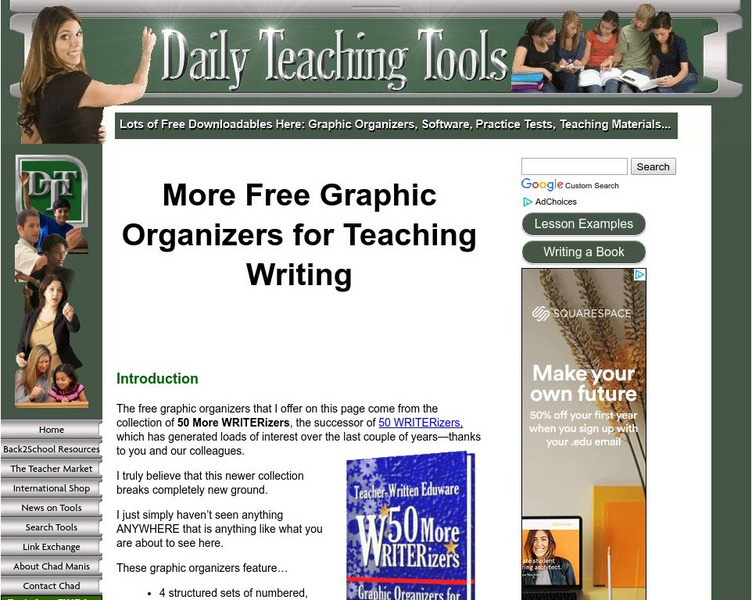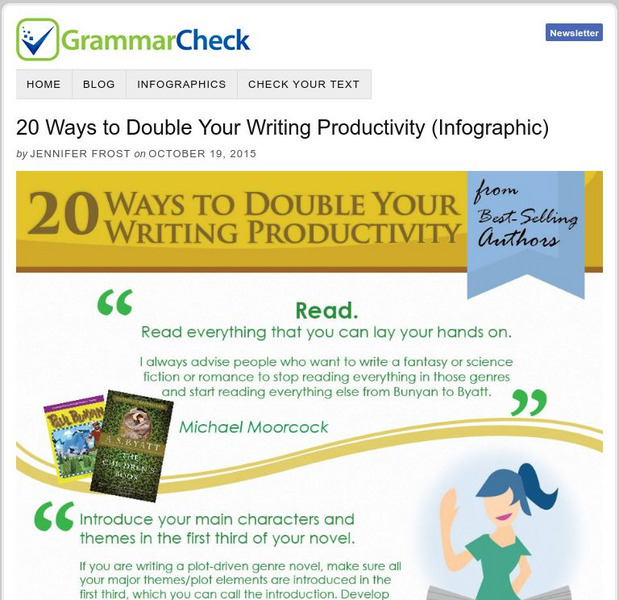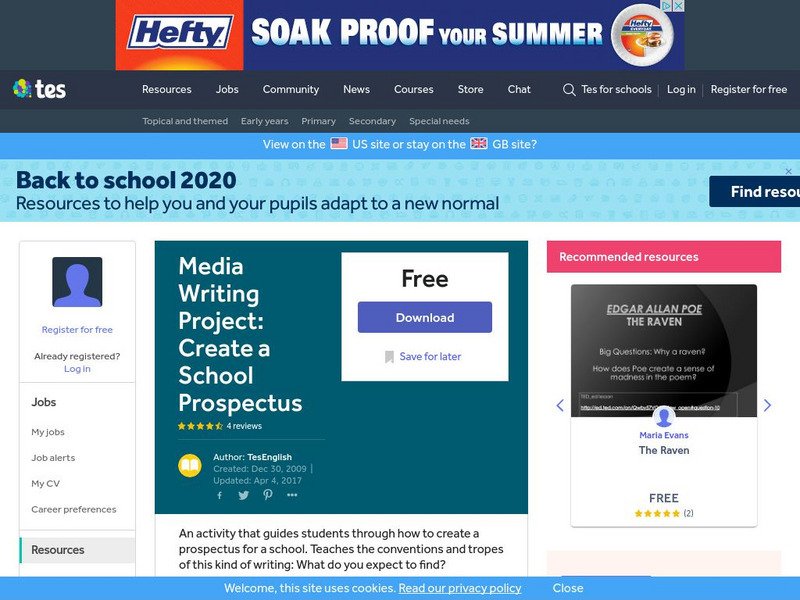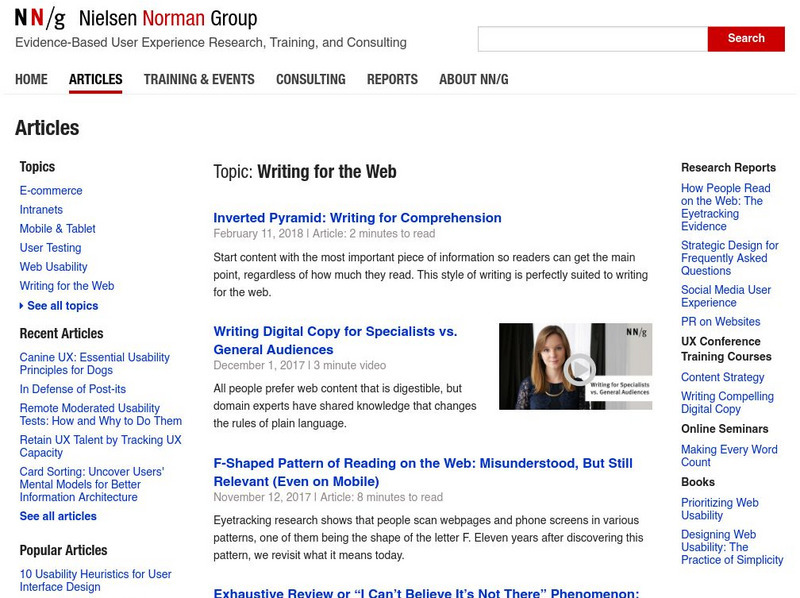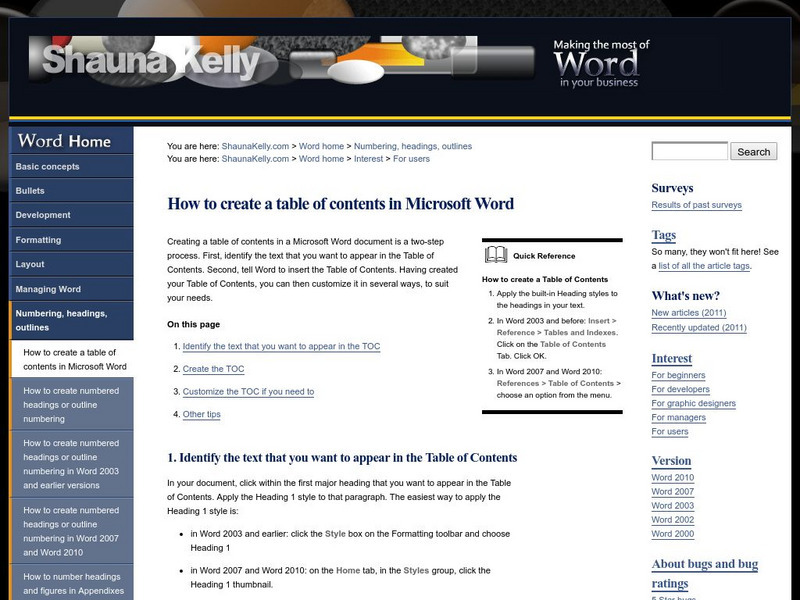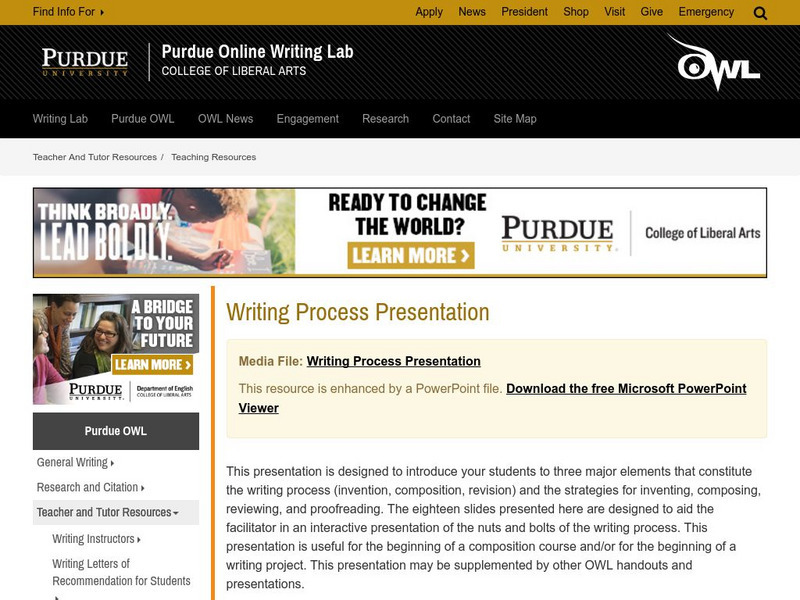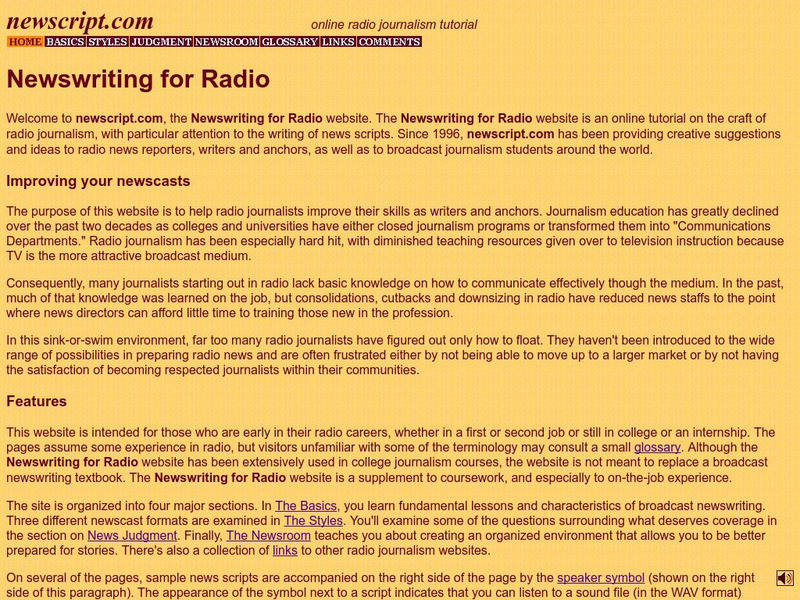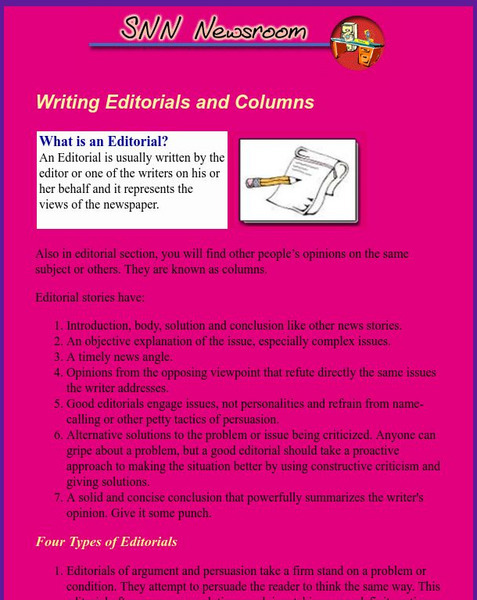Daily Teaching Tools
Daily Teaching Tools: Graphic Organizers for Teaching Writing
This Daily Teaching Tools collection provides graphic organizers for writing. Elaborate graphic organizers for the following areas are provided: persuasive essays, expository essays, paragraph writing, fiction pieces, narrative writing,...
Other
Be Succinct! Writing for the Web
This article gives helpful information on how to write effectively for the web. Gives information on short texts, scannability, and hypertext structure.
Grammar Check
Grammar Check: 20 Ways to Double Your Writing Productivity (Infographic)
This infographic is provided to help students with writing a novel. Tips from famous authors are included to help students write efficiently and confidently.
TES Global
Tes: Media Writing Project: Create a School Prospectus
[Free Registration/Login Required] Students will develop a brochure for a school during this writing unit. Students will learn functional writing and how to apply the associated conventions.
Other
Nielsen Norman Group: Writing for the Web
A detailed and comprehensive site that gives information on how to effectively and professionally write for the world wide web.
Other
The Writing Conference, Inc.: Writing Contest
This site explains the basics for the writing contest, which is open to all students. There are contests in poetry, narration, and exposition. The topic is the same for all three forms and links are provided for the judging criteria.
Other
Stc: The Society for Technical Communication
This site is dedicated to The Society for Technical Communication. Its membership includes writers, editors, illustrators, printers, publishers, educators, students, engineers, and scientists. You'll find resource materials, databases,...
Harold D. Underdown
A Publisher's Sample Guidelines
A list of typical or sample guidelines a publishing company may provide for manuscript submission. Relates primarily to children's literature but may also apply to other forms. CCSS.ELA-Literacy.WHST.6-8.6 Use technology to produce and...
Community Learning Network
Community Learning Network: Journalism Theme Page
This site from the Community Learning Network has great information on the art of journalism. The site is outlined by links for easy navigation and contains a rather exhaustive section on general resources. A great site to check out on...
Sophia Learning
Sophia: Determining Your Audience
On this website you will find information, two presentations, and a practice worksheet explaining how to decide the audience of a written piece and how to appeal to an intended or general audience in an original text....
Sophia Learning
Sophia: Easy to Create Graphic Organizers
Two PDF's that can be viewed online or downloaded and printed. The first is one page showing students several examples of abbreviations that can be used when taking notes. The second is a four pages and shows how different types of...
Annenberg Foundation
Annenberg Learner: Workshop 1: Creating a Community of Writers
Workshop 1 explores the components of a community of writers and what teachers can do to create and foster such a community. After a brief introduction to the goals of all eight workshop sessions, middle school teacher and writing expert...
Other
Shauna Kelly: How to Create a Table of Contents in Word
This article explores how to create a table of contents in Microsoft Word using the styles tool. Written with step-by-step instructions, the article includes information on how to create the table of contents, how to customize it, and...
Colorado State University
Colorado State Writing Center: Online vs. Print Publishing
A thorough and well-researched resource on the history and advantages/disadvantages of print and online publishing. W.9-10.6 Techno
Colorado State University
Colorado State Writing Center: Writing for the Web
A resource for writers who are interested in writing, planning, and coding their own websites. Includes step-by-step instructions and links to further information.
Sophia Learning
Sophia: Paper Writing (I Just Got Assigned a Paper. Now What?)
Work through the writing process by following these ten easy steps. The site also provides tips on brainstorming to generate ideas and using Venn diagrams to organize thoughts.
Sophia Learning
Sophia: Writing for an Audience
A seven-slide presentation discussing the importance of writing to an audience in order to establish tone, strengthen word choice, and determine what supporting details to include.
Online Writing Lab at Purdue University
Purdue University Owl: Teaching Resource: Writing Process: Power Point
A PowerPoint presentation that introduces the processes of inventing, composing, and revising written works. W.9-10.5 Writing Process, W.11-12.5 Writing Process
University of North Carolina
University of North Carolina: Writing Center Tips & Tools
The documents and videos collected here touch on most aspects of good academci writing, and all aspects of the writing process. Students can choose from the many topics to address the specific skill or concept they need to master.
Wisc-Online
Wisc Online: Communication: The Writing Process
The learner will identify the three steps: prewriting, drafting, revising/editing, in the writing process and the elements in each step. W.9-10.5 Writing Process, W.11-12.5 Writing Process
Writing Fix
Writing Fix: Hamburger Paragraph Template for Students [Pdf]
This is a PDF hambuger template (graphic organizer) to help students organize and write stronger paragraphs.
Other
Newswriting for Radio
Students and writers can get pointers on improving writing skills for newscasts. Click through all the tabs to get the most out of this tutorial. This site also links to other radio journalism websites.
Other
Snn Newsroom: Reporter's Toolbox: Writing Editorials and Columns
Advice and examples of editorial and feature column writing, along with an explanation of the role that editorial writers and columnists fill. Explains how to structure this type of writing in order to present clear arguments.
Other
Write Words: Word Frequency Counter
A simple writing tool where one can paste in a piece of text, and count how many times each word appears in the text. A good tool to use to avoid over-using words.


